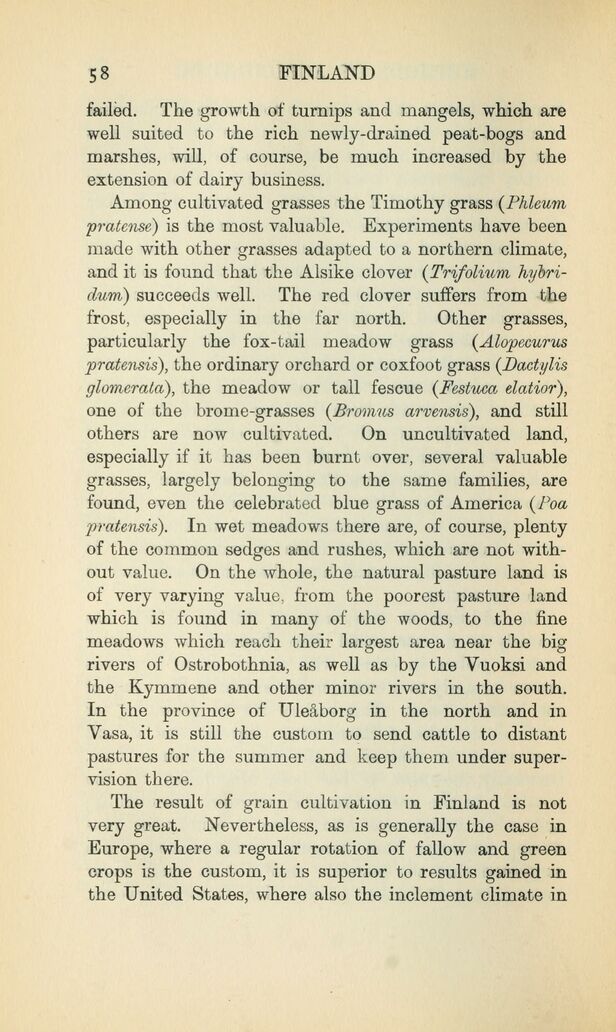
Full resolution (JPEG) - On this page / på denna sida - IV. Methods and Conditions of Agriculture

<< prev. page << föreg. sida << >> nästa sida >> next page >>
Below is the raw OCR text
from the above scanned image.
Do you see an error? Proofread the page now!
Här nedan syns maskintolkade texten från faksimilbilden ovan.
Ser du något fel? Korrekturläs sidan nu!
This page has been proofread at least once.
(diff)
(history)
Denna sida har korrekturlästs minst en gång.
(skillnad)
(historik)
failed. The growth of turnips and mangels, which are
well suited to the rich newly-drained peat-bogs and
marshes, will, of course, be much increased by the
extension of dairy business.
Among cultivated grasses the Timothy grass (Phleum
pratense) is the most valuable. Experiments have been
made with other grasses adapted to a northern climate,
and it is found that the Alsike clover (Trifolium
hybridum) succeeds well. The red clover suffers from the
frost, especially in the far north. Other grasses,
particularly the fox-tail meadow grass (Alopecurus
pratensis), the ordinary orchard or coxfoot grass (Dactylis
glomcrata), the meadow or tall fescue (Festuca elatior),
one of the brome-grasses (Bromus arvensis), and still
others are now cultivated. On uncultivated land,
especially if it has been burnt over, several valuable
grasses, largely belonging to the same families, are
found, even the celebrated blue grass of America (Poa
pratensis). In wet meadows there are, of course, plenty
of the common sedges and rushes, which are not
without value. On the whole, the natural pasture land is
of very varying value, from the poorest pasture land
which is found in many of the woods, to the fine
meadows which reach their largest area near the big
rivers of Ostrobothnia, as well as by the Vuoksi and
the Kymmene and other minor rivers in the south.
In the province of Uleåborg in the north and in
Vasa, it is still the custom to send cattle to distant
pastures for the summer and keep them under
supervision there.
The result of grain cultivation in Finland is not
very great. Nevertheless, as is generally the case in
Europe, where a regular rotation of fallow and green
crops is the custom, it is superior to results gained in
the United States, where also the inclement climate in
<< prev. page << föreg. sida << >> nästa sida >> next page >>